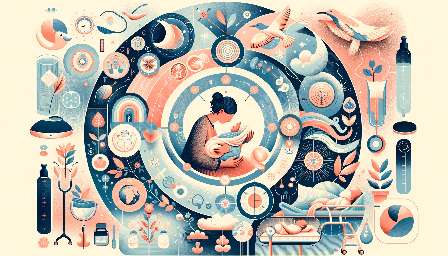During lactation, a woman's body undergoes a series of remarkable physiological changes aimed at fostering the production and flow of breast milk. These changes are closely intertwined with the processes of childbirth and breastfeeding, collectively representing a profound physiological transformation unique to the experience of motherhood.
1. Hormonal Dynamics
Hormonal shifts play a central role in preparing the mother's body for lactation. Predominantly, two hormones, prolactin and oxytocin, orchestrate the key physiological changes associated with the production and release of breast milk.
Prolactin: Touted as the primary hormone for milk production, prolactin is secreted by the pituitary gland and is responsible for stimulating the mammary glands to commence milk production. Its levels surge during late pregnancy and peak immediately after childbirth. Prolactin production is also promoted by the act of breastfeeding, as the stimulation of the nipples triggers the release of this hormone, thus maintaining and enhancing milk supply.
Oxytocin: Oxytocin, often referred to as the 'love hormone,' plays a pivotal role in the ejection of milk from the mammary glands. This hormone facilitates the contraction of the cells surrounding the mammary glands, enabling the release of milk into the baby's mouth. Oxytocin also plays a crucial part in the bonding between the mother and her infant, as its release is heightened during breastfeeding.
2. Breast Changes
Lactation instigates significant anatomical modifications in the mother's breasts to support the efficient production, storage, and delivery of breast milk.
Growth and Expansion: During pregnancy, the preparation for milk production commences as the milk ducts expand and grow in number. This proliferative phase is complemented by the development of alveoli, which are small sacs within the breast where milk is produced and stored. The combined effect of these changes leads to an increase in breast size and weight in anticipation of lactation.
Colostrum Production: In the initial days following childbirth, the breasts secrete colostrum, a nutrient-rich, yellowish fluid that precedes the production of mature breast milk. Colostrum serves as the baby's first food and is instrumental in kickstarting the infant's immune system, providing antibodies and essential nutrients to bolster the baby's health.
3. Metabolic Adaptations
The metabolic demands of lactation prompt significant alterations in the mother's body to address the increased energy requirements associated with milk production.
Caloric Expenditure: Lactating mothers experience heightened energy expenditure to sustain milk synthesis. This necessitates an increase in their caloric intake to meet the augmented energy demands, as women typically burn an extra 300-500 calories per day during lactation.
Weight Loss: Notably, lactation aids in postpartum weight loss for some mothers. The energy utilized in milk production can contribute to the shedding of pregnancy weight, although individual responses vary. However, it is vital for mothers to prioritize balanced nutrition to ensure their sustained well-being and milk production.
4. Uterine Involution
Uterine involution, the process of the uterus returning to its pre-pregnancy state, is closely tied to lactation and breastfeeding.
Contractions: Oxytocin, in addition to facilitating milk ejection, fosters contractions of the uterus. These contractions serve to decrease the size of the uterus, expelling blood and tissue remnants from the placental site. The coordinated efforts of these contractions help the uterus regain its non-pregnant size and shape, aiding in the mother's postnatal recovery.
5. Emotional and Psychological Impact
Lactation exerts a profound impact on the emotional and psychological well-being of the mother, influencing her bonding with the infant and contributing to a sense of fulfillment and closeness.
Oxytocin Release: The release of oxytocin during breastfeeding is associated with feelings of relaxation, attachment, and contentment, fostering a deep emotional bond between the mother and her baby. Additionally, the physical act of breastfeeding serves as a calming and reassuring experience for both the mother and child, nurturing a nurturing and secure environment.
Maternal Confidence: Successfully nourishing the baby through breastfeeding typically enhances the mother's confidence and sense of accomplishment, as it represents a critical aspect of maternal care. This positive reinforcement often fosters a mother's emotional resilience and satisfaction in her mothering role.
Conclusion
Lactation engenders a cascade of intricate physiological changes in the mother's body, necessitating a harmonious interplay of hormonal, anatomical, metabolic, and emotional adaptations. These transformations, interwoven with the processes of childbirth and breastfeeding, epitomize the remarkable journey of motherhood. Understanding these physiological changes not only fosters an appreciation for the complexities of breastfeeding but also emphasizes the extraordinary capacities of the female body in ensuring the nourishment and well-being of the newborn.


